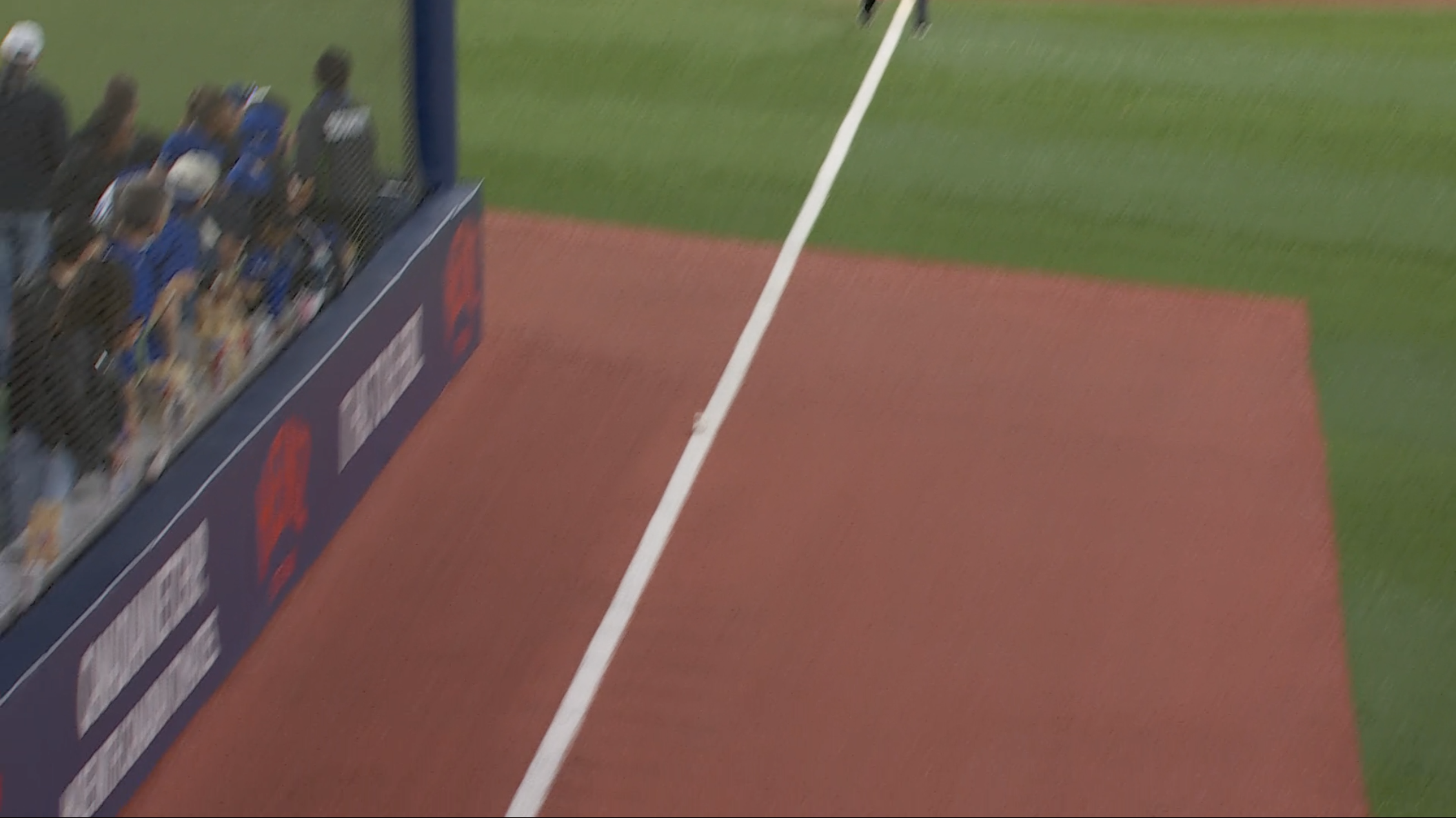
A line drive off the bat of Anthony Santander, of the Toronto Blue Jays, lands directly on the first-base foul line, thus becoming a fair ball. As the foul line and the ball are both white, it's hard to see where the ball is, so to get a better look, click here, where we have used incredibly highly sophisticated technology to help you find the ball.
Fair vs. Foul
When a ball gets put into play, it will either wind up in fair territory, or in foul territory. That seems fairly cut and dry, right?
Except: when you hit a baseball with a bat, said ball tends to go flying off in all sorts of unpredictable directions, carrying various degrees of spin. And all of that means that a baseball can easily go from fair ground to foul ground in the course of its trajectory, or from foul ground to fair ground.
So, what actually makes a ball fair or foul? First, imagine a line running horizontally from one side of the field to the other, directly through first and third base, and extending out on both sides until it hits the stands, kind of like this:
For the purposes of this explanation, a ball that touches the ground at any point before reaching that line is considered a "ground ball,", while any ball that touches the ground past that point is considered a "fly ball".
For ground balls, the first condition for determining fair vs. foul is if someone touches it. Depending on how squirrelly of a grounder it is, the first person to touch it might be the batter. As long as the batter is still in the batter’s box, then the result is a foul ball. Similarly, if the ball immediately hits the catcher or umpire (who always start in foul territory), it's a foul ball.
Next up are the other infielders. Once the ball is touched by a fielder, then the location of the ball when it is touched becomes the most important thing. If the ball is in foul territory, it’s a foul ball, if it’s in fair territory, it’s a fair ball. It doesn’t matter what happens to the ball after that.
If the ball avoids the fielders, then it will keep rolling. If said ball just stays in fair or foul territory, then its status is obvious. But what about balls that are rolling near the foul lines? Well, do you remember that first-to-third imaginairy line we were talking about earlier? When a ground ball crosses this imaginary line, its position determines whether the ball is fair or foul. So, if the ball is foul when it crosses the line, it’s a foul ball. Same thing for fair territory.
The foul lines, here, count as being in fair territory, as do the bases themselves. So, if the ball rolls along the foul line and boinks off of the base, it’s a fair ball, even if it bounces into foul territory afterwards. Similarly, any ball that crosses the first-to-third line by bouncing over first or third base is a fair ball. Players are not allowed to try to influence a ball that is rolling down the line by waving at it blowing on it. And it's important to remember that a ball can land in foul territory, but break back into fair territory at the last second.
All of that is for ground balls. Fly balls, meanwhile, are fairly easy to grasp. A ball hit into the air is judged by where it lands. That’s it. If the ball lands in fair territory, it’s fair. If it lands in foul territory, it’s foul. If the ball lands on the foul line itself, then the same logic we talked about for ground balls applies— the ball is fair, even if it subsequently bounces into foul ground. Similarly, the foul poles at the end of the foul lines also count as fair territory, so when a long fly ball bounces off one of those poles, it’s a fair ball (and more importantly, a home run), even if its fly ball's path to said foul pole is assisted by a fielder.1.
Okay, so that’s fair vs. foul. Make sense? Mostly? Good.